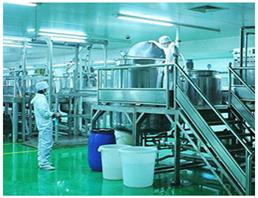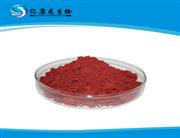Bacterial characteristics
1. Significant anti-mycoplasma (mycoplasma) effect
It has a strong inhibitory effect on mycoplasma pleuropneumoniae and other various mycoplasmas, and is the drug of choice for infectious diseases of livestock and poultry.
2. Broad spectrum of antibacterial spectrum
It is mainly effective against a variety of Gram-positive (G+) bacteria, and also inhibits some Gram-negative (G-) bacteria, Bacteroides (formerly Vibrio), spirochetes, and anti-coccidia effect.
3. Rapid absorption and excretion
Regardless of oral or injection, the effective inhibitory concentration can be achieved in a short period of time (10 minutes) and kept for a certain period of time. After stopping the drug, it is quickly excreted, and there is almost no residue in the tissue.
4. Has good diffusion ability
It penetrates into all organs, tissues and body fluids, especially through the plasma membrane, blood brain, blood eye and blood testis barrier, which makes tylosin a wide range of clinical applications.
5. Significant growth promoting effect
Continuous low-dose feeding of tylosin to livestock and poultry in the growing season not only prevents diseases, but also significantly promotes animal growth, shortens the growth cycle, and improves feed compensation.
6. The specificity of use
Tylosin is a special antibiotic for livestock and poultry, which avoids the problem of cross-resistance that is easy for humans and animals to share antibiotics.
Growth promoting effect
Tylosin has a good growth-promoting effect, and the rational use of tylosin as a feed additive can not only prevent livestock diseases, but also ensure the health of livestock and poultry, and can obviously promote the growth and development of livestock and poultry, especially for young livestock and poultry. The effect of livestock and poultry in the growing season is significant, which can play a role in improving feed utilization, shortening the feeding cycle and increasing the economic benefits of aquaculture.
1. The growth promoting effect on pigs
Yang Libin et al. studied the effects of tylosin, olaquindox and noida on the growth of pigs and the performance of pigs. The results showed that the addition of 50mg/kg tylosin tartrate to the diet had the most obvious effect on the growth performance of growing pigs. The average daily gain (ADG) was 0.69kg, which was significantly higher than (P<0.05) 30mg/kg Tycoon. Group (0.63kg), 40mg/kg olaquindox group (0.61kg), 500mg/kg Nobida group (0.64kg) and control group (0.64kg); add 50mg/kg tylosin tartrate to the diet, Feed: Weight gain ratio was 2.39:1, feed consumption was significantly lower than (P<0.05) olaquindox group (2.75:1), significantly lower than the Nobida group (2.54:1), 30mg/kg tylosin group (2.51:1) and the control group (2.56:1), the feed conversion rate was 13.09% higher than that of the olaquindox group, 5.91% higher than the Nobita group, and 4.78% higher than the 30 mg/kg tylosin group. Increase by 6.64%. The annual production of pig feed in the country is about 40.15 million tons. If the above dosage is used as the growth-promoting dose, the tylosin premix will be consumed by more than 20,000 tons per year in pig feed.
2. The growth promoting effect on broilers
Zheng Chuntian et al studied the effects of adding different types and different doses of tylosin and chlortetracycline and rosacea on the performance of broilers. The results showed that in the 1 to 3 weeks old stage, the average weight gain of the 8.5 mg/kg tylosin group was higher than that of the 40 mg/kg chlortetracycline group in the 20 mg/kg, 10 mg/kg tylosin tartrate group. And 50 mg/kg of rosacea group, in the 1-3 weeks old stage, the weight gain of the 10 mg/kg tylosin tartrate group was significantly higher than that of the chlortetracycline group and the rosacea group (P<0.05) at 1-7. At the age of week, the feed consumption was lowest at the 10 mg/kg tylosin tartrate group (2.03:1), followed by the 20 mg/kg tylosin tartrate group (2.04:1) and the 8.5 mg/kg tylosin phosphate group. (2.07:1), the three tylosin groups were significantly lower than the 40 mg/kg chlortetracycline group (2.13:1) and the 50 mg/kg rosacea group (2.09:1). In terms of economic benefits, environmental protection and hygiene, the dosage of tylosin tartrate in broiler diets is preferably 10 mg/kg. With an annual national egg and poultry feed and 51 million tons of meat and poultry feed, the 10% tylosin premix as an additive requires more than 25,000 tons a year.

 China
China







